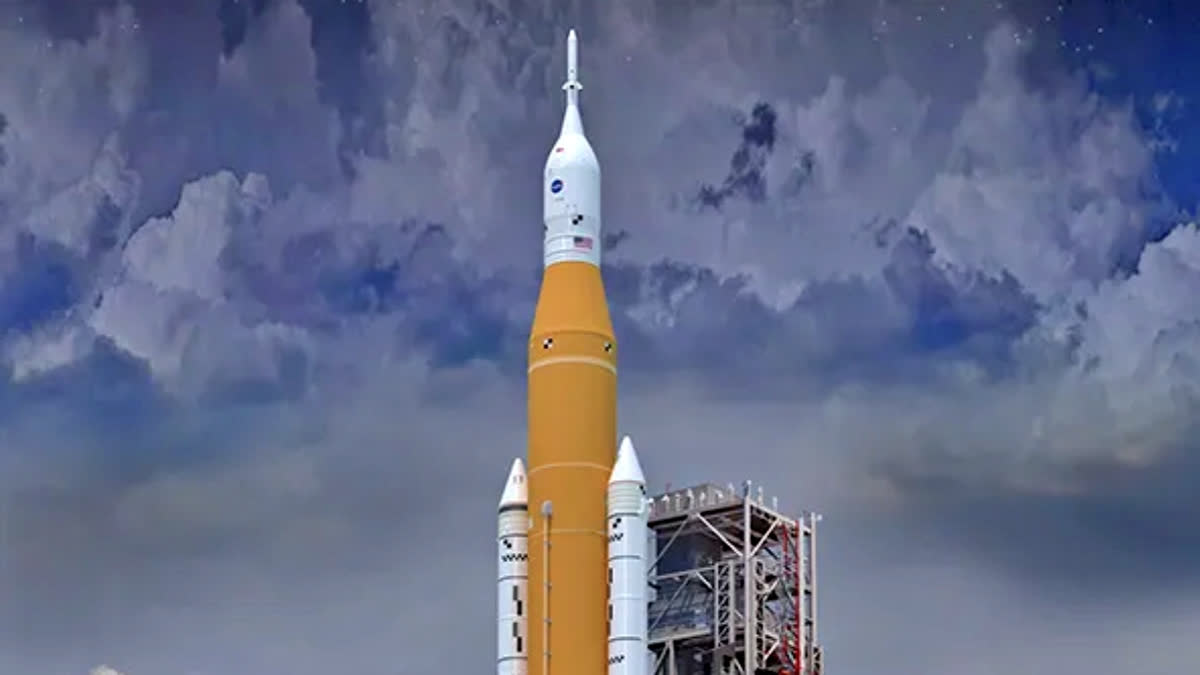Hyderabad:After an absence of more than 50 years, NASA is set to send astronauts back to the moon through its Artemis program, aiming to establish a permanent lunar presence. However, a recent report from the United States Government Accountability Office (GAO) casts doubt on NASA's ability to meet its ambitious late 2025 landing goal for Artemis III.
In a report released on November 28, the GAO concluded that while NASA has made significant strides in returning astronauts to the lunar surface, achieving the late 2025 landing goal for Artemis III seems unlikely.
Typically, major NASA missions demand over six and a half years for development. A 2025 launch for the new moon exploration mission would surpass this average. However, the intricate nature of this undertaking, involving the creation of a new lunar lander and spacesuits, both adhering to the rigorous safety standards of human spaceflight, makes it improbable to complete critical design, fabrication, and testing within the specified time frame.
The GAO also emphasised on the impracticality of expecting the program to outpace the average development time for major NASA projects, especially considering that the majority of these projects do not involve human spaceflight. If development aligns with the typical timeline for NASA's major projects, the Artemis III mission is likely to materialise in early 2027, as per the GAO's findings.
What is Artemis III? Artemis III is a space mission where astronauts will embark on NASA's new mega rocket, the Space Launch System(SLS), successfully tested in November 2022 without a crew. The SLS will launch the Orion spacecraft, which will carry the astronauts to and from lunar orbit. The spacecraft will then be transferred to the SpaceX Starship craft, which will land the astronauts on the south pole of the resource-rich earth's lone satellite. The astronauts will spend almost a week on the Moon’s south pole before Starship lifts them back up into lunar orbit. The astronauts will then return to Orion, where they’ll burn their engines before returning home to splash down in the Pacific Ocean.
'Why is there a delay?'The delay is primarily attributed to challenges in developing the lunar lander and new space suit designs. The Human Landing System program's ambitious 79-month timeline, aiming to finish 13 months faster than average NASA projects, appears unrealistic due to the project's complexity.
The GAO has suggested that, if development follows the typical timeline for major NASA projects, the Artemis III mission might take place in early 2027, highlighting the intricate nature of this human spaceflight endeavour.
'Delay in human landing system'- Another area of concern is SpaceX, which is grappling with delays in the Human Landing System. The SpaceX Starship lander, contingent on successful spacecraft and rocket testing, has encountered setbacks, including a booster explosion during a November flight test. Delays in eight of 13 "key events" for the landing system has also been a major contributor to the Artemis mission postponement.
SpaceX faces the additional challenge of constructing and launching the tanker system vital for refuelling the moon lander. The GAO mentioned limited progress in maturing the required technologies for this critical aspect of the plan.
'Delay in new space suit'-Axiom Space, responsible for NASA's new spacesuit development, is tasked with creating suits offering enhanced mobility for lunar exploration. However, challenges persist, including the need for emergency life support adjustments. Potential redesigns could delay spacesuit delivery, with the crucial "Flight Readiness Review" potentially extending into late 2025.
'Rescheduling of key events'- The GAO reported that as of September 2023, 8 out of 13 key events within the Human Landing System have experienced delays of at least 6 months. Two of these events have been shifted to 2025, the year poised for the launch. A significant contributor to the delays is the Orbital Flight Test, initially slated for April 2023, but now delayed by 7 months due to complications—specifically, the test vehicle deviated from its intended trajectory, leading to a tumble.
Integral to the success of the Artemis 3 mission is SpaceX's completion of technical tasks. This involves demonstrating the capability to store and transfer propellant while in orbit. The process includes multiple tankers transporting propellant to a space "depot" before its transfer to the human landing system—an essential component for moon missions. Progress in this critical aspect is the responsibility of SpaceX.
Read More from our NASA coverage
- NASA administrator Bill Nelson meets Rakesh Sharma, says "The universe is the limit!"
- Mars Solar conjunction: NASA's rovers, orbiters to continue science ops
- NASA, SpaceX to send mission with over 5,800 pound cargo to ISS on Nov 9
- NISAR: NASA-ISRO radar mission to provide dynamic view of forests, wetlands
